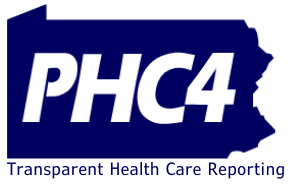Shaken Baby Syndrome is a devastating form of child abuse caused by an impact with an object and/or violent shaking, which is typically a result from a parent or caregiver’s response to a crying infant. Shaken Baby Syndrome can be fatal to infants, and for those who do survive the result of direct brain injury, suffer permanent neurological damage such as blindness, developmental delays, mental retardation, seizures, physical disabilities, paralysis, and/or brain damage. Dr. Mark S. Dias is a Professor of Neurosurgery at the Pennsylvania State University College of Medicine, Vice Chair for Clinical Neurosurgery and Chief of Pediatric Neurosurgery at the Penn State Milton S. Hershey Medical Center, and Medical Director of Spina Bifida Clinic and Director of Pennsylvania Shaken Baby Syndrome Prevention Program at Penn State Health Children’s Hospital. Dr. Dias has worked extensively in the field of educating parents on Shaken Baby Syndrome (now called Abusive Head Trauma) and the dangers of violent infant shaking. In 2003, he started the Pennsylvania Shaken Baby Syndrome Prevention & Awareness Program to educate parents about Shaken Baby Syndrome. The program, modeled after a successful program he started in 1998 in upstate New York, provides consistent hospital-based education in all Pennsylvania birthing and children’s hospitals. Dr. Dias notes, “The interventions are well received and parents report learning a lot about normal infant crying, how to calm themselves and their baby, the dangers of violent infant shaking, and wisely selecting caregivers.”
Dr. Dias recently purchased Pennsylvania Health Care Cost Containment Council (PHC4) data to ascertain the incidence and hospitalization rates for Shaken Baby Syndrome in Pennsylvania before and during the intervention. The PHC4 data was abstracted based on the Centers for Disease Control and Prevention (CDC) abusive head trauma standardized ICD-9 and E-code combinations. Dr. Dias stated, “We actually saw increases had occurred during the intervention in abusive head trauma hospitalization rates from the PHC4 dataset and in abusive head trauma incidence rates by tracking reports to the child line and abuse registry dataset from the Pennsylvania Department of Human Services (DHS). This was the opposite of what we expected based on our success in upstate New York; and it was disappointing to say the least.”
Dr. Dias went on to say, “We considered a number of possible confounders including the difficulties encountered in implementing the program on such a large scale as an entire state, the effect of the recession which appears to have produced a rise in abusive head trauma incidence in two separate studies in other areas during the same time, and the possibility that Pennsylvania is different than upstate New York (for which we compared a number of socioeconomic indicators using census data, and for which we did not find statistically significant differences). We are left with the possibility that the program is not effective as originally thought.” Dr. Dias continued, “We did see a statistically significant decline in the mortality from abusive head trauma during the study program, which was thought to be a positive effect. However, we recently learned that this reduction in mortality has also been seen across the United States, as reported by CDC. The data also showed that there is a greater rate of abusive head trauma hospitalization in Pennsylvania compared with five other states lacking such an intervention. This was seen both before and during the intervention.”
Dr. Dias explains how valuable PHC4 data was to support his project, “The PHC4 dataset was instrumental in analyzing data on hospitalization rates. PHC4 data was of high quality, comprehensive, and easy to analyze. Unlike other datasets we considered, it could be generated and compared with datasets from other states that were provided by CDC. This allowed us to compare the hospitalization rates in Pennsylvania with hospitalization rates already analyzed and published by the CDC. Moreover, the CDC science officer related to us that the Journal of the American Medical Association (JAMA) found the use of hospitalization rates much more valuable to compare pre- and post-intervention rates. I’m not sure we would be published without the PHC4 data we used.”
Dr. Dias shares his experience, “PHC4’s Special Requests staff was extremely helpful and responsive. They were eager to help and went the extra mile to change the search strategies after discussions we had with CDC statisticians. We received answers to our questions in a timely manner, usually within hours. The data was actually remarkably inexpensive for what we got, and I was quite pleased with the cost-effectiveness of the dataset.”
In the future, Dr. Dias hopes to construct a serial text messaging program for parents during the first six postnatal months and, if funded, would use PHC4 data for hospitalization rates to assess the effectiveness of this intervention enhancement.
Return to the Case Studies page: VIEW ALL CASE STUDIES


